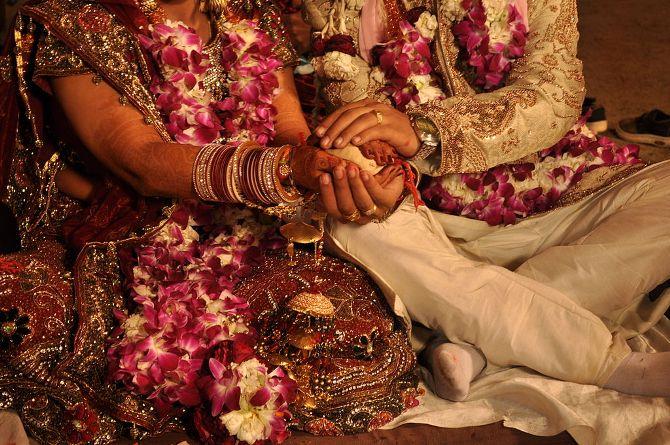Hotels roll out red carpet as big fat weddings return

Cash registers are ringing more frequently at hotels and resorts with the return of the big fat Indian wedding after a two-year hiatus.
This comes even as the small and intimate ceremonies — which became popular during the pandemic — are also set to keep those employed in the hospitality sector on their toes.
As many as 2.5 million marriages are expected to get solemnised during the wedding season that gets underway from next week and stretches on till April, according to industry estimates.
With no restrictions on the number of guests, hotels of all sizes and formats are in huge demand with most of them running at a record optimal capacity and rates.
Most hotels are seeing the number of weddings they are likely to host this season surpass the peak of 2019-20.
“We have 257 bookings for this season till March as compared to 142 in 2019-20, and many more are in the queue,” said S P Jain, chairman of SP Group, which owns and operates Pride Group of Hotels.
With a pan-Indian presence, some of its properties in metros and non-metros can host two weddings simultaneously and accommodate as many as 2,000 guests, he claimed.
Upscale luxury brands, too, are seeing a similar trend.
“We are witnessing an uptick in demand for the upcoming wedding season.
“Our hotels across key leisure destinations, including Karjat, Lonavala, Vizag, Goa, Dharamshala and Udaipur are geared up for welcoming guests,” said Zubin Saxena, managing director (MD) and vice-president (V-P), operations, South Asia, Radisson Hotel Group.
Weddings came to the rescue of the hospitality sector when the going was tough, said Manav Thadani, co-founder of Hotelivate, a hospitality consulting firm.
“Last two years, a lot of hotels just survived because of the weddings.
“While there were restrictions on the number of people, among others, the business from weddings never stopped in India.”
The pandemic also saw a trend of reverse migration from standalone banquet halls to hotels, and the trend seems to be continuing, he added.
The destination wedding segment has definitely seen a rise post-pandemic, said a spokesperson at ITC Hotels.
The spokesperson added that there was a stronger affinity for locations in India that are not only inherently beautiful but also offer excellent wedding-friendly facilities.
ITC Grand Bharat in Gurugram, ITC Grand Goa, ITC Mughal in Agra or ITC Rajputana in Jaipur are great wedding destinations, the spokesperson said.
Uttarakhand-based Leisure Hotel Group, which owns and runs premium hotels under its own brand and is also the asset owner of Indian Hotel Company’s Taj and Ginger hotels in Northern India, is looking to host 40 weddings in Corbett National Park alone this season.
This is against the figure of 30 in 2019-20, said Vibhas Prasad, owner of Leisure Hotels Group.
“This time around, in an unprecedented trend, we are seeing people choosing even the non-Saya dates (not so auspicious dates) to get married.
“Not only is there demand for more rooms but also for other services such as decorations, flower arrangements and other ancillaries,” said Prasad.
“The room tariffs and other charges on non-saya dates are lower by almost 30 per cent compared to the auspicious days,” he said.
Hotels are going all out to offer curated packages.
Radisson Hotels is offering immersive guest journeys customised for couples and families like champagne welcome, speedboat transfers and thematic dinners.
Guests can also select from handpicked menus with signature cuisine options from the kitchens of its 108 hotels across India.
According to a survey conducted by WeddingWire India, a marketplace for wedding professionals, most couples are focusing on quality over quantity and trimming the guest list.
Themed and personalised weddings are also emerging as the latest trends in the wedding market. Couples are also more gravitated towards sustainable options for their big day.
The tariff for wedding packages at Pride Hotels, for instance — that includes everything from welcome drinks to the bidaai (bride’s send-off ceremony) — is up 25-30 per cent compared to 2019-20.
“The costs have doubled in the last couple of years — from electricity, manpower and groceries to other consumables. But profits have not gone up in the same proportion.
“So, if we hadn’t taken the price increase, we would have run into losses,” said Jain, adding that given the strong demand, there is room for further increase.
Source: Read Full Article

